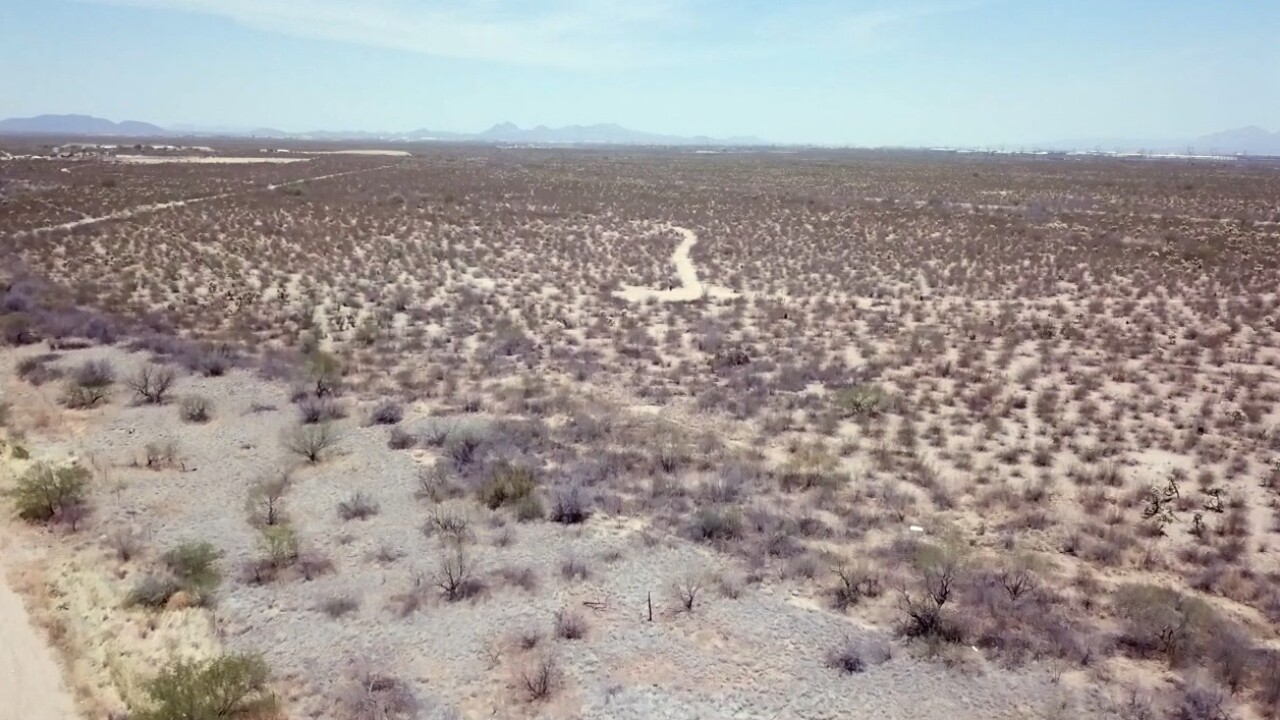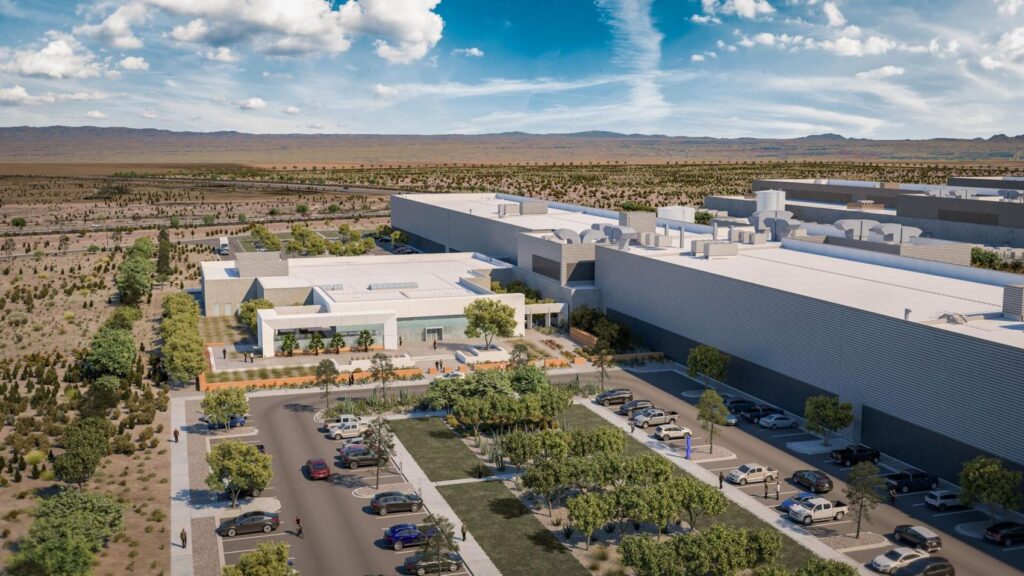Project Blue
The following is from tucson.com, the Arizona Daily Star: July 03, 2023 • By Tony Davis
HUGE TUCSON DATA CENTER TO USE DRINKING WATER FOR 2-3 YEARS
Developers of the proposed Project Blue data-center complex on Tucson’s far southeast side are considering proposing and building two more data-center complexes in the metro area, after the first site gets final approvals from the Tucson City Council.
And while Project Blue officials have said their first complex will ultimately rely on non-drinking water for its operations, it will need to use drinking water for the project’s first two or three years. That’s how long it will take for the project’s developer to build an 18-mile pipeline to transmit what it calls “renewable” water from the regional wastewater treatment plant on the northwest side to the data center complex.
The possibility of a larger data center network and the likelihood of the first center’s extended use of drinking water were reported to the Arizona Daily Star this week by Ed Hendel, a member of a city water advisory committee. Both points were confirmed Tuesday by Keri Silvyn, attorney for Project Blue’s developers.
Hendel’s information came from a meeting Friday when he and Tucson City Councilman Kevin Dahl met with officials of the data center development company, Beale Infrastructure Group, and Silvyn.
“Project Blue is one of three data center complexes — another one in Tucson, another in the Marana area.” The other two are in “the very preliminary planning stages,” said Hendel, a Citizens Water Advisory Committee member and an environmentalist who has spoken out against the currently proposed data center complex.
If the current Project Blue site “is actually just a prelude to two more more data centers, it’s shocking,” said Hendel, who is alarmed by how much water and electricity they will use. The first complex alone is expected to have eight to 10 large warehouse-sized buildings.
Hendel also told the Star that Beale Infrastructure officials said last Friday the reclaimed water headed for Project Blue will be blended with treated, long-contaminated water pumped from the decades-old Superfund site on Tucson’s south side. The final product will be called “renewable” water, he said.
That water is now pumped to a treatment plant in that area run by the city that removes TCE, 1,4-dioxane and PFAS compounds before the water is ultimately delivered to the reclaimed water system. But now, Beale officials said the Superfund site water will also get additional treatment, including an antiscalant compound to reduce the water’s hardness, Hendel said.
On Tuesday, Silvyn told the Star the company is “exploring the feasibility of other sites in the overall Tucson area. At the time we are maybe a little bit further along and have more information, we definitely will share more information.”
Until now, public discussion of future Project Blue data center sites has been very limited, and details about how much water would be used have been kept secret — the latter due to a non-disclosure agreement signed by developers and city and county officials.
At the June 17 Pima County Board of Supervisors meeting at which Project Blue won several key approvals for its plans, Silvyn testified, “Beale Infrastructure is looking at some other sites, but they’re not before us today and they’re still in exploration.”
In the past week, in addition to Hendel, several other sources familiar with the data center issue have told the Star they’ve heard that Project Blue will have one or two other sites. One source, who asked that their name not be used because they are concerned about professional retribution for speaking out, said the second Project Blue site would lie adjacent or very near to the first one, which is near the Pima County Fairgrounds.
But at Friday’s meeting, Hendel reported, all Project Blue officials said about the second site is that it would be in the city of Tucson, and that a third site would likely be in the Marana area. Two other sources have also told the Star that the third site would likely be in the Marana area.
One source recounted hearing that the second site would house 16 data center buildings. Silvyn said she hadn’t heard that number being planned; “that’s not accurate.”
“I don’t know” what Project Blue’s timing is for developing a second and third site, Silvyn said.
“We’re not prepared to answer that. There’s a lot of different moving parts to this and our focus is on this project,” said Silvyn. “We’re not being catty about it. The answers to the kind of questions you’re asking are not available.”
Silvyn also confirmed that the southeast-side data center complex will rely on potable water for two to three years before reclaimed water arrives.
“The idea is that significant infrastructure, fully made, is going to take place simultaneously with construction of Phase 1 of the (data center) project,” Silvyn said. “That’s a timing issue we’re going to be working on with the city.”
A firm timetable for when the developers can commit to convert from drinkable to reclaimed water will be made when the developer and city officials sign off on a formal development agreement, she said. That agreement will come out before the Tucson City Council votes on whether to annex the Project Blue site into the city.
Speaking of the company’s plans for blending the water, Silvyn said her understanding “is that it is a combination of a couple of different water sources that could increase the (water supply) capacity to the Tucson area — it’s all in discussions with Tucson Water.” She did not immediately provide more details.
The reports of possible additional data centers and a prolonged timetable before the currently planned one receives non-drinking water come as public controversy has dogged Project Blue since its existence was first disclosed in late May.
The Board of Supervisors voted 3-2 in June to first sell the 290 acres planned for the center to a purchaser representing Project Blue, then to approve zoning changes needed to allow the project to proceed. Annexation of the site into the city is now scheduled to be considered by the City Council in August.
The county board’s approval came over the objections of dozens of speakers from the general public, who argued that the project would use too much water and too much electricity. While city and county officials said the city’s reclaimed water system had more than enough capacity to serve Project Blue, they also refused to say how much water the project will use, due to the non-disclosure agreement that city officials have signed with Project Blue developers.
Backers of the project have noted that its developers have promised to create 180 long-term, high paying jobs at the first site, although the Board of Supervisors’ approval only requires the company to provide 75 jobs at an average $75,000 annual salary.
Water has been a major concern driving Hendel’s opposition to Project Blue. He’s particularly outraged at the unwillingness of the company and city and county officials to release specifics about water use.
The developers have said the project will be “water positive,” meaning they plan to recharge more water into the aquifer in recharge projects than they use in their operations.
But they’ve declined to say how they plan to do that, although a map they presented at the Board of Supervisors meeting when their plans were approved showed two recharge basins at a separate location from where their data center complex is planned.
Hendel said Beale Infrastructure officials said at Friday’s meeting that they’ll release more specifics on water use before the council votes on annexation. At the meeting, Hendel said he chided Beale’s chief development officer, Michael Nudelman, about the lack of information, and said, “If you are going to make it water positive, that would be an incredible accomplishment. You should be touting it from the rooftops. Why are you keeping it secret?”
“He (Nudelman) said, ‘I just want to correct your statement. It’s not a secret. It just hasn’t been disclosed yet,’” Hendel told the Star.
Nudelman didn’t return a text message from the Star asking if Hendel’s account was accurate. Tuesday afternoon, Silvyn asked that the Star route that question through her but she hadn’t yet replied to the question.
She did tell the Star that more specifics about the project’s water use, including how it will be “water positive,” will be included in the forthcoming development agreement.
Hendel is president of an AI company called Sky Island AI. It recently posted a dashboard outlining its projected estimates of the first Project Blue site’s water and energy use. “My best guess is that this will use 1% to 5% of Tucson’s water supply and 11% to 43% of TEP’s electricity supply,” he said.
“If you multiply that electricity use by all three data centers, that could use more power than TEP’s entire supply,” Hendel said.
“I think the U.S needs more data centers, because of the rising influence of AI. But putting them in the desert when we are already low on water is reckless. Putting three of them in is even more reckless,” Hendel said.
Replying, Silvyn said she personally appreciated the concerns Hendel and others have expressed about the data center’s water use.
“But I also need to point out that … we have a water provider in the city of Tucson that has significantly stewarded our water in a phenomenal way,” Silvyn said. “That’s partly what attracted that developer to our region. They shared our desire for stewardship in the industry.”
She said TEP’s goals for renewable energy, in which it plans to have “net zero” greenhouse gas emissions by 2050, “align in a pretty profound way” with Beale’s sustainability goals.
“I would ask that everybody wait and hear and try to understand what this project is standing for before passing judgment,” she said.

